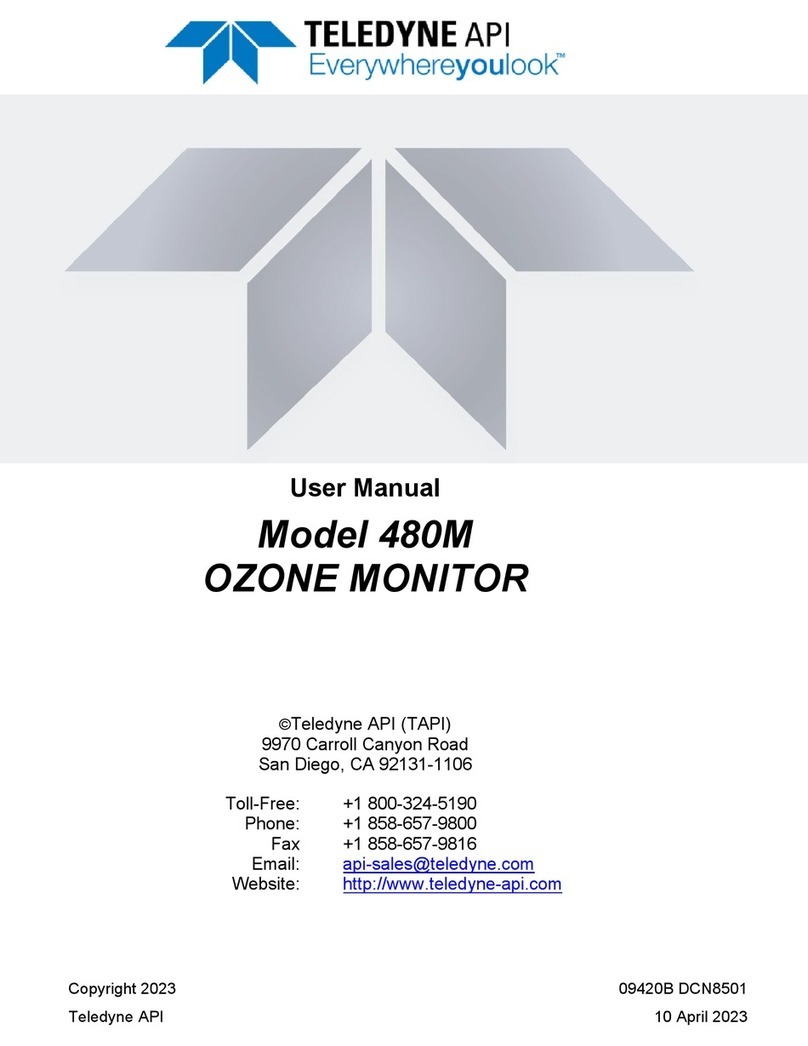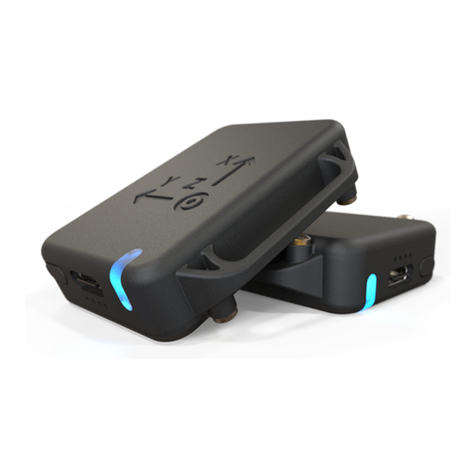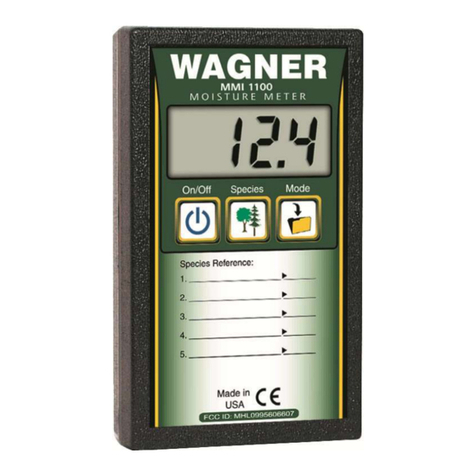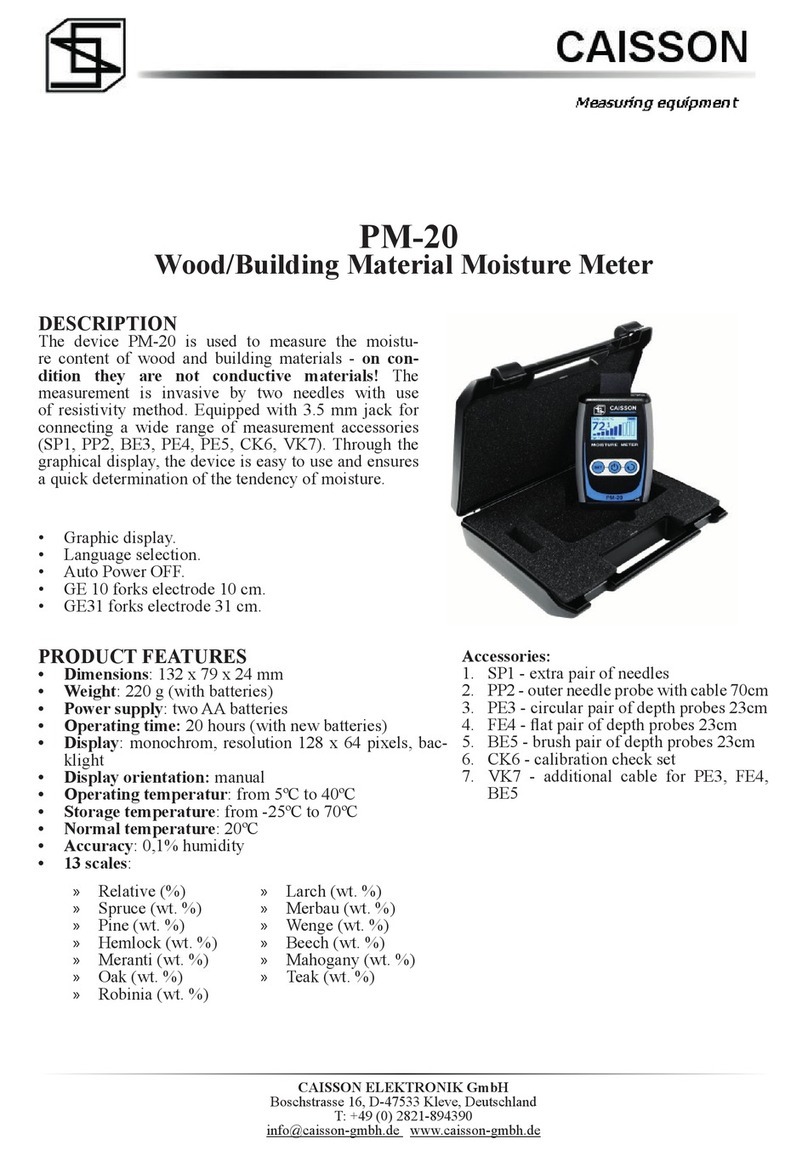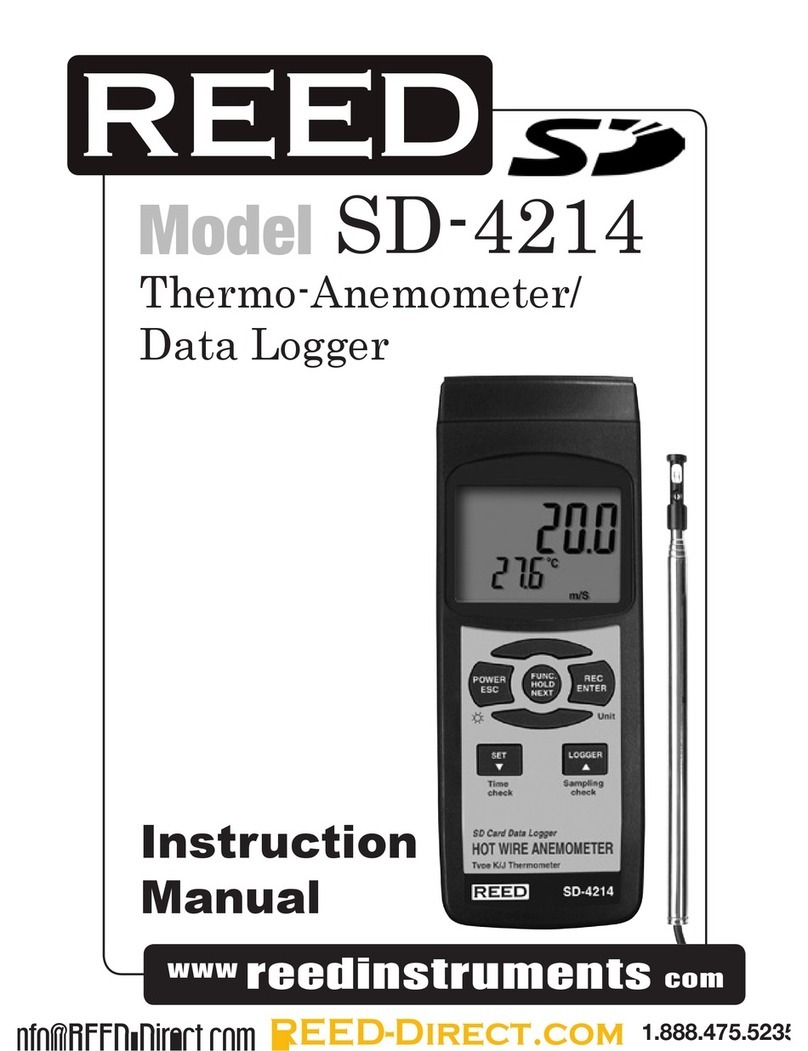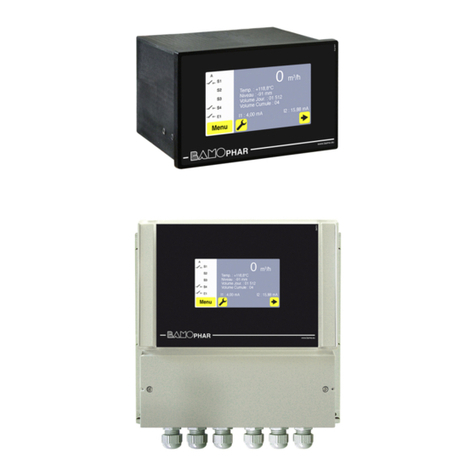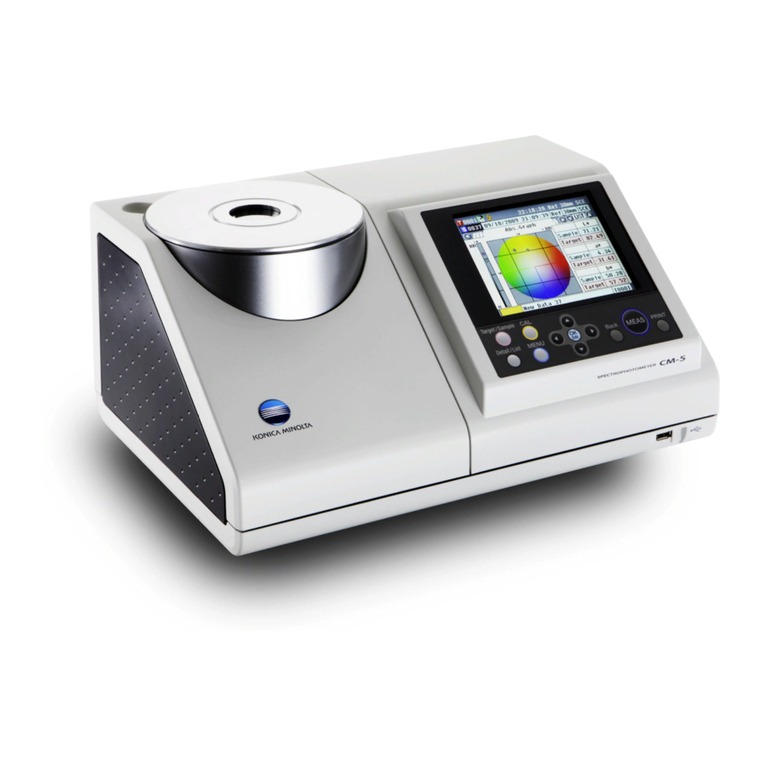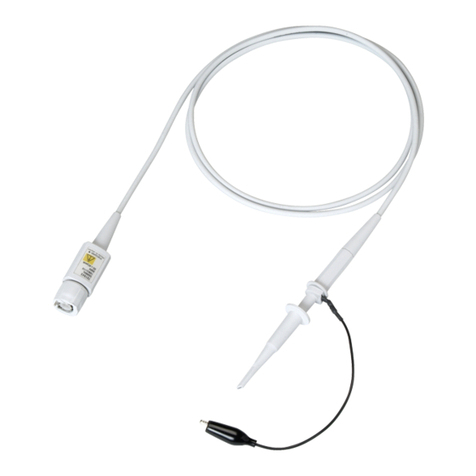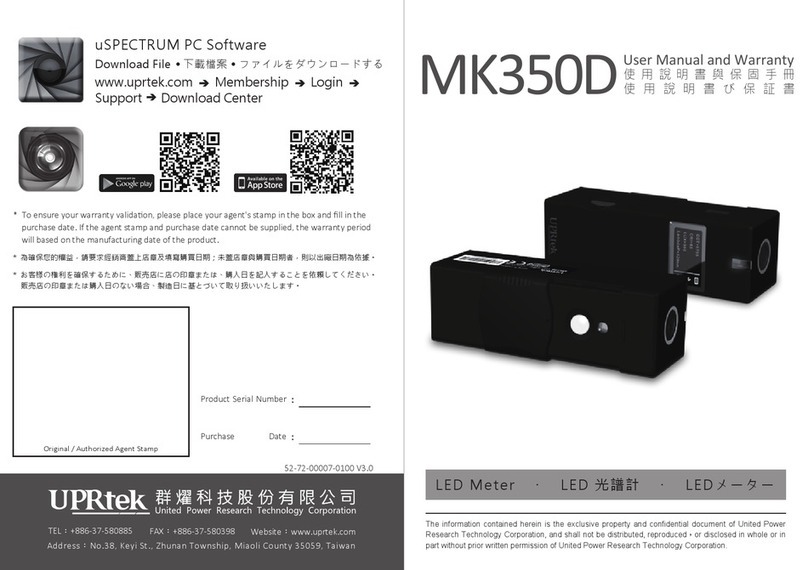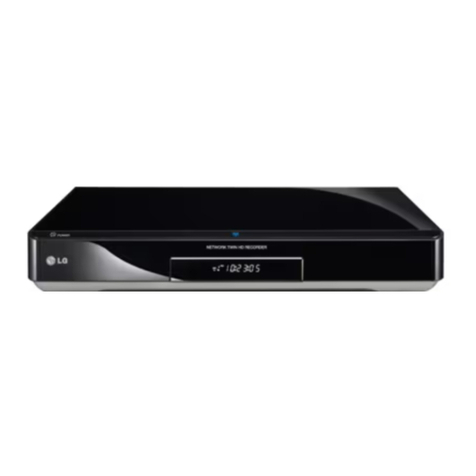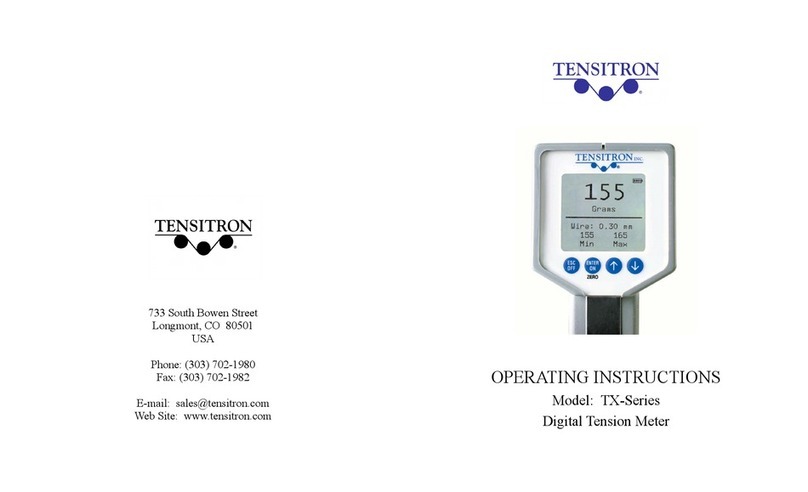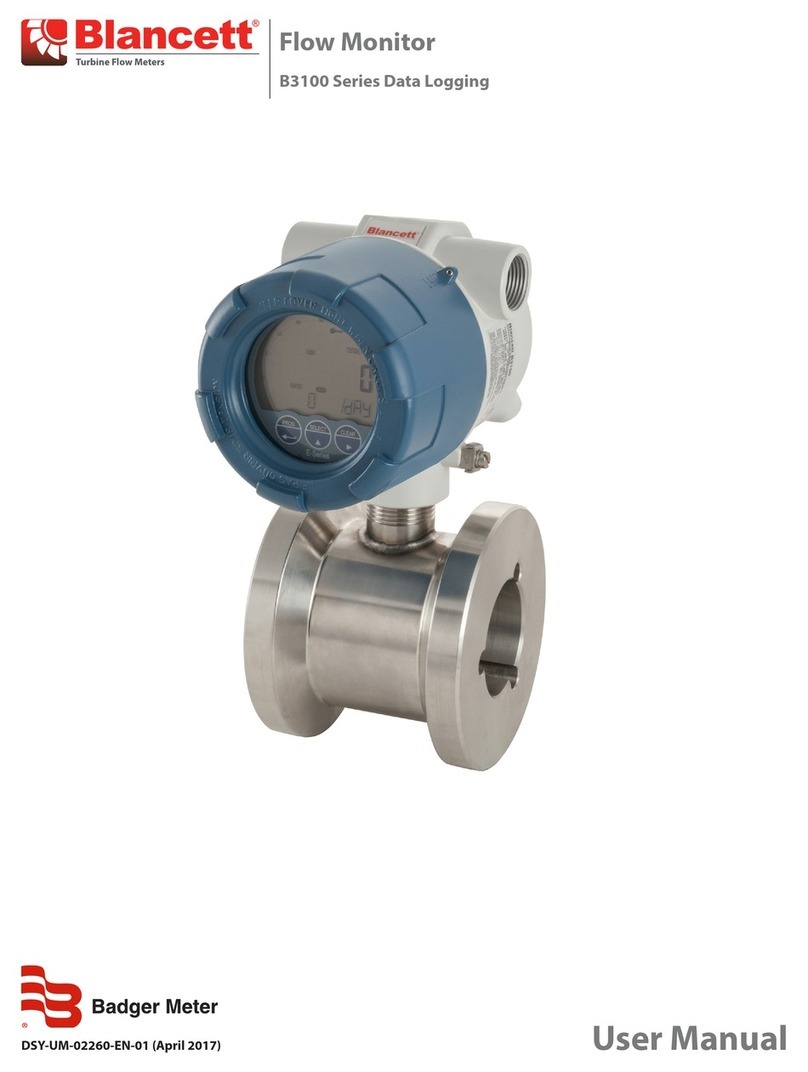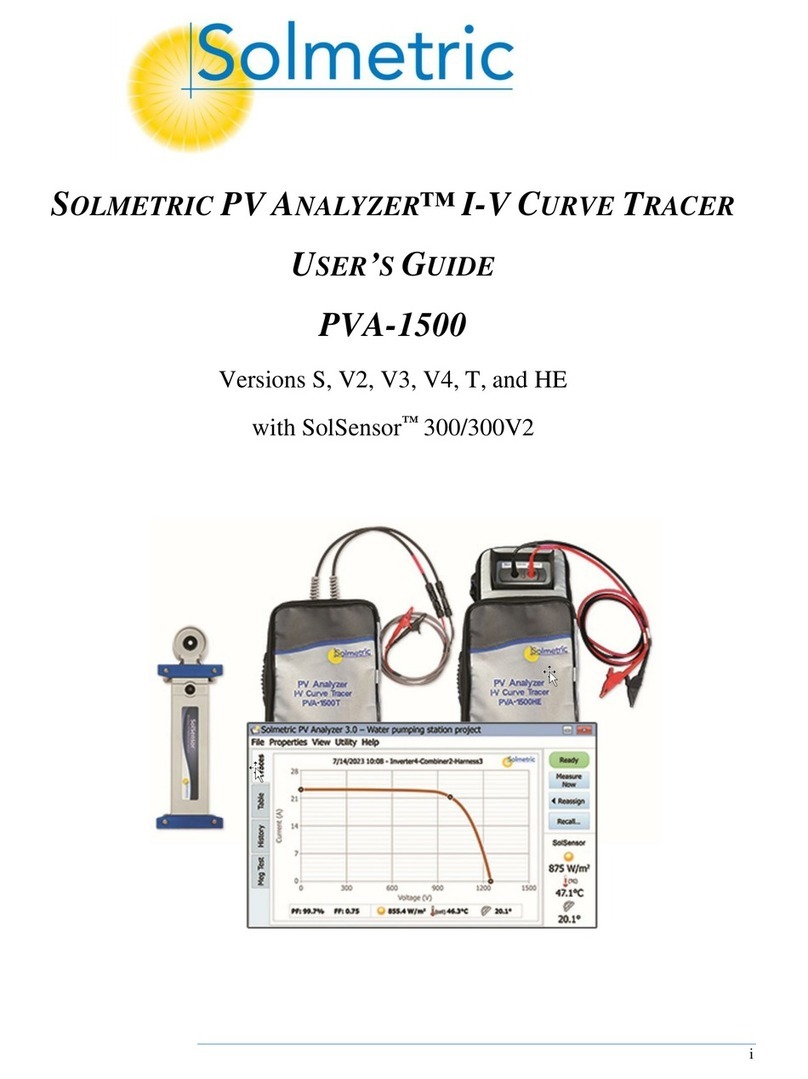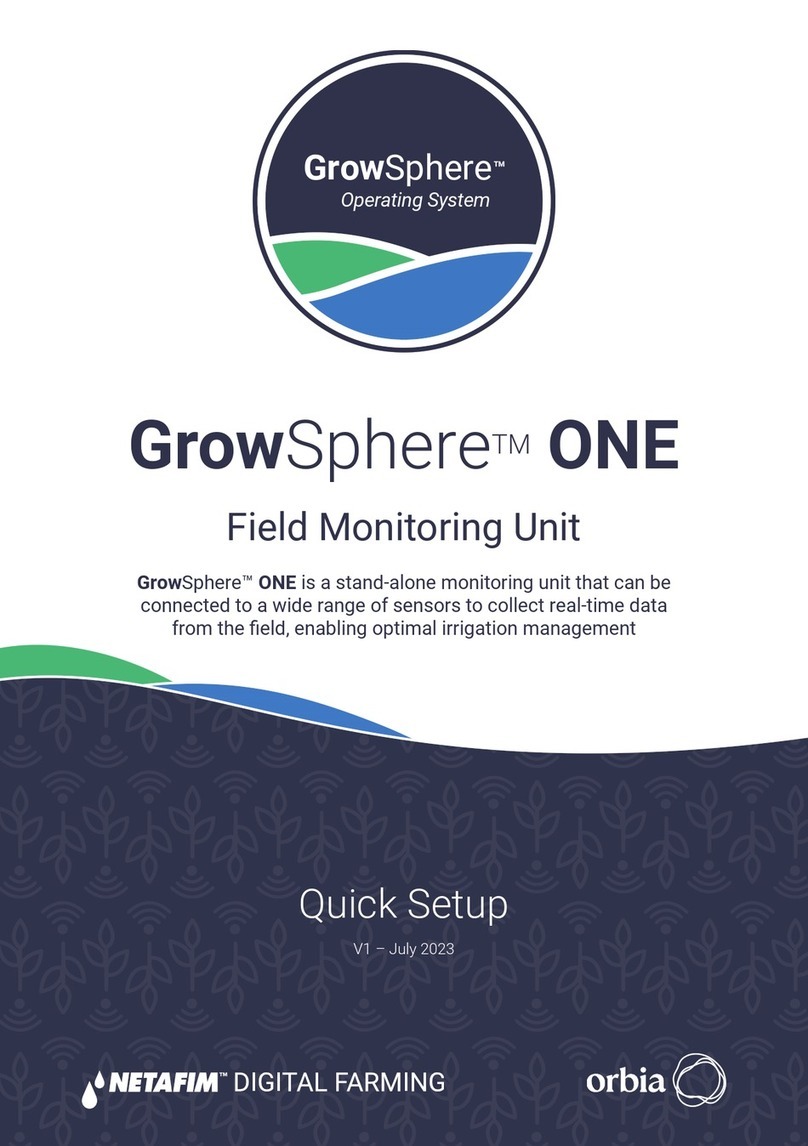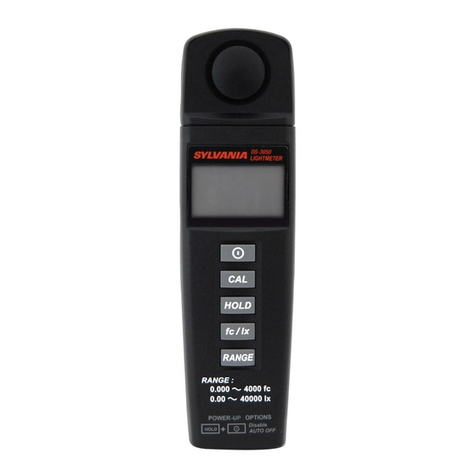TELEDYNE API T300M User manual

User Manual
Model T300/T300M
Carbon Monoxide Analyzer
with NumaView™ software
© Teledyne API (TAPI)
9970 Carroll Canyon Road
San Diego, CA 92131-1106
USA
Toll-free Phone:
+1 800-324-5190
Phone:
+1 858-657-9800
Fax:
+1 858-657-9816
Email:
api-sales@teledyne.com
Website:
http://www.teledyne-api.com/
Copyright 2019
08370300ADCN8101
Teledyne API
29 April 2019


083730300A DCN8101 i
NOTICE OF COPYRIGHT
© 2019 Teledyne API (TAPI). All rights reserved.
TRADEMARKS
All trademarks, registered trademarks, brand names or product names appearing in this
document are the property of their respective owners and are used herein for
identification purposes only.

ii 083730300A DCN8101
SAFETY MESSAGES
Important safety messages are provided throughout this manual for the purpose of
avoiding personal injury or instrument damage. Please read these messages carefully.
Each safety message is associated with a safety alert symbol and is placed throughout this
manual; the safety symbols are also located inside the instrument. It is imperative that
you pay close attention to these messages, the descriptions of which are as follows:
WARNING: Electrical Shock Hazard
HAZARD: Strong oxidizer
GENERAL WARNING/CAUTION: Read the accompanying message
for specific information.
CAUTION: Hot Surface Warning
Do Not Touch: Touching some parts of the instrument without
protection or proper tools could result in damage to the part(s) and/or
the instrument.
Technician Symbol: All operations marked with this symbol are to be
performed by qualified maintenance personnel only.
Electrical Ground: This symbol inside the instrument marks the
central safety grounding point for the instrument.
CAUTION
This instrument should only be used for the purpose and in the
manner described in this manual. If you use this instrument in a
manner other than that for which it was intended, unpredictable
behavior could ensue with possible hazardous consequences.
NEVER use any gas analyzer to sample combustible gas(es)!
For Technical Assistance regarding the use and maintenance of this instrument or any
other Teledyne API product, contact Teledyne API’s Technical Support Department:
Telephone: +1 800-324-5190 (toll free) or +1 858-657-9800
Email: api-techsupport@teledyne.com
or access any of the service options on our website at http://www.teledyne-api.com/

083730300A DCN8101 iii
CONSIGNES DE SÉCURITÉ
Des consignes de sécurité importantes sont fournies tout au long du présent manuel dans
le but d’éviter des blessures corporelles ou d’endommager les instruments. Veuillez lire
attentivement ces consignes. Chaque consigne de sécurité est représentée par un
pictogramme d’alerte de sécurité; ces pictogrammes se retrouvent dans ce manuel et à
l’intérieur des instruments. Les symboles correspondent aux consignes suivantes :
AVERTISSEMENT : Risque de choc électrique
DANGER : Oxydant puissant
AVERTISSEMENT GÉNÉRAL / MISE EN GARDE
: Lire la consigne
complémentaire pour des renseignements spécifiques
MISE EN GARDE : Surface chaude
Ne pas toucher : Toucher à certaines parties de l’instrument sans protection ou
sans les outils appropriés pourrait entraîner des dommages aux pièces ou à
l’instrument.
Pictogramme « technicien » : Toutes les opérations portant ce symbole doivent
être effectuées uniquement par du personnel de maintenance qualifié.
Mise à la terre : Ce symbole à l’intérieur de l’instrument détermine le point central
de la mise à la terre sécuritaire de l’instrument.
MISE EN GARDE
Cet instrument doit être utilisé aux fins décrites et de la manière décrite dans
ce manuel. Si vous utilisez cet instrument d’une autre manière que celle pour
laquelle il a été prévu, l’instrument pourrait se comporter de façon imprévisible
et entraîner des conséquences dangereuses.
NE JAMAIS utiliser un analyseur de gaz pour échantillonner des gaz
combustibles!

iv 083730300A DCN8101
WARRANTY
WARRANTY POLICY (02024J)
Teledyne API (TAPI), a business unit of Teledyne Instruments, Inc., provides that:
Prior to shipment, TAPI equipment is thoroughly inspected and tested. Should
equipment failure occur, TAPI assures its customers that prompt service and support will
be available. (For the instrument-specific warranty period, please refer to the “Limited
Warranty” Section in the Terms and Conditions of Sale on our website at the following
link: http://www.teledyne-api.com/terms_and_conditions.asp).
COVERAGE
After the warranty period and throughout the equipment lifetime, TAPI stands ready to
provide on-site or in-plant service at reasonable rates similar to those of other
manufacturers in the industry. All maintenance and the first level of field troubleshooting
are to be performed by the customer.
NON-TAPI MANUFACTURED EQUIPMENT
Equipment provided but not manufactured by TAPI is warranted and will be repaired to
the extent and according to the current terms and conditions of the respective equipment
manufacturer’s warranty.
PRODUCT RETURN
All units or components returned to Teledyne API should be properly packed for
handling and returned freight prepaid to the nearest designated Service Center. After the
repair, the equipment will be returned, freight prepaid.
The complete Terms and Conditions of Sale can be reviewed at http://www.teledyne-
api.com/terms_and_conditions.asp
CAUTION – Avoid Warranty Invalidation
Failure to comply with proper anti
-Electro-Static Discharge (ESD) handling
and packing instructions and Return Merchandise Authorization (RMA)
procedures when returning parts for repair or calibration may void your
warranty. For anti
-ESD handling and packing instructions please refer to
the manual, Fundamentals of ESD, PN 04786, in its
“Packing
Components for Return to Teledyne API’s Customer Service”
section. The
manual can be downloaded from our website at
http://www.teledyne-
api.com
. RMA procedures can also be found on our website.

083730300A DCN8101 v
ABOUT THIS MANUAL
This manual is comprised of multiple documents, in PDF format, as listed below.
Part No.
Name/Description
083730300 T300 CO Analyzer User Manual with NumaView™ Software
(this manual)
n/a MODBUS Registers, Appendix A
069120000 T300/T300M Interconnect Diagram, Appendix B
Support that manuals are also available on the CD of Instrument User Manuals and on the
TAPI website http://www.teledyne-api.com include:
•NumaView™ Remote Software User Guide, part number 08492
•Hessen Protocol Manual, part number 04585
•Fundamentals of ESD Manual, part number 04786 (to prevent Electro-Static Discharge and
consequent damage to instrument)
•Pump Pack Manual, part number 07900 (if option installed)
NOTE
We recommend that all users read this manual in its
entirety before operating the instrument.
CONVENTIONS USED
In addition to the safety symbols as presented in the Safety Messages page, this manual
provides special notices related to the careful and effective use of the instrument and
related, pertinent information.
ATTENTION COULD DAMAGE INSTRUMENT AND VOID
WARRANTY
This special notice provides information to avoid
damage to your instrument and possibly invalidate
the warranty.
IMPORTANT IMPACT ON READINGS OR DATA
Provides information about that which could either
affect accuracy of instrument readings or cause loss
of data.
NOTE Provides information pertinent to the proper care,
operation or maintenance of the instrument or its
parts.

vi Table of Contents 083730300A DCN8101
TABLE OF CONTENTS
1. Introduction, Specifications, Approvals, & Compliance.................................................................14
1.1 Specifications...............................................................................................................................................15
1.2 EPA Designation .........................................................................................................................................17
1.3 Approvals and Certifications........................................................................................................................17
1.3.1 Safety ...............................................................................................................................................17
1.3.2 EMC .................................................................................................................................................17
1.3.3 Other Type Certifications .................................................................................................................17
2. Getting Started............................................................................................................................18
2.1 Unpacking....................................................................................................................................................18
2.1.1 2.1.1 Ventilation Clearance ..............................................................................................................19
2.2 Instrument Layout........................................................................................................................................20
2.2.1 Front Panel.......................................................................................................................................20
2.2.2 Rear panel........................................................................................................................................21
2.2.3 Internal Chassis ...............................................................................................................................23
2.3 Connections and Startup .............................................................................................................................26
2.3.1 Electrical Connections......................................................................................................................26
2.3.1.1 Connecting Power .............................................................................................................26
2.3.1.2 Connecting Analog Outputs ..............................................................................................27
2.3.1.3 Current Loop Analog Outputs (Option 41) Setup ..............................................................27
2.3.1.4 Connecting the Status Outputs (Digital Outputs) ..............................................................29
2.3.1.5 Connecting the Control Inputs (Digital Inputs) ..................................................................30
2.3.1.6 Connecting the Concentration Alarm Relay (Option 61) ...................................................31
2.3.1.7 Connecting the Communication Interfaces .......................................................................31
2.3.2 Pneumatic Connections ...................................................................................................................37
2.3.2.1 Important Information about Calibration Gases ................................................................39
2.3.2.2 Pneumatic Connections: Basic Configuration ...................................................................40
2.3.2.3 Pneumatic Connections: Ambient Zero/Ambient Span Option .........................................42
2.3.2.4 Pneumatic Connections: Ambient Zero/Pressurized Span Option ...................................44
2.3.2.5 Pneumatic Connections: Zero Scrubber/Pressurized Span Option ..................................45
2.3.2.6 Pneumatic Connections: Zero Scrubber/Ambient Span Option ........................................46
2.3.3 Pneumatic Flow Diagrams ...............................................................................................................48
2.3.3.1 Pneumatic Flow: Basic Configuration................................................................................48
2.3.3.2 Pneumatic Flow: Ambient Zero/Ambient Span Valve Option............................................49
2.3.3.3 Pneumatic Flow: Ambient Zero/Pressurized Span Option ................................................50
2.3.3.4 Pneumatic Flow: Zero Scrubber/Pressurized Span Option...............................................51
2.3.3.5 Pneumatic Flow: Zero Scrubber/ Ambient Span Option (T300 0nly) ................................52
2.3.3.6 Pneumatic Flow: Second Sensor Options.........................................................................53
2.3.4 Startup, Functional Checks, and Initial Calibration ..........................................................................54
2.3.4.1 Startup ...............................................................................................................................54
2.3.4.2 Alerts: Warnings and Other Messages..............................................................................55
2.3.4.3 Functional Checks .............................................................................................................56
2.3.4.4 Initial Calibration ................................................................................................................56
2.4 Menu Overview............................................................................................................................................57
2.4.1 Home Page ......................................................................................................................................58
2.4.2 Dashboard........................................................................................................................................60
2.4.3 Alerts ................................................................................................................................................61
2.4.4 Calibration ........................................................................................................................................62
2.4.5 Utilities..............................................................................................................................................63
2.4.6 Setup ................................................................................................................................................63
2.5 Setup Menu: Features/Functions Configuration.........................................................................................64

083730300A DCN8101 vii
2.5.1 Setup>Data Logging (Data Acquisition System, DAS) ....................................................................64
2.5.1.1 Configuring Trigger Types: Periodic..................................................................................66
2.5.1.2 Configuring Trigger Types: Conditional............................................................................67
2.5.1.3 Downloading DAS (Data Acquisition System) Data ..........................................................67
2.5.2 Setup>Events...................................................................................................................................68
2.5.2.1 Editing or Deleting Events .................................................................................................70
2.5.2.2 Using Events as Triggers for Data Logging.......................................................................70
2.5.3 Setup>Dashboard ............................................................................................................................71
2.5.4 Setup>AutoCal (with Valve Option) .................................................................................................72
2.5.5 Setup>Vars ......................................................................................................................................72
2.5.6 Setup>Homescreen .........................................................................................................................73
2.5.7 Setup>Digital Outputs ......................................................................................................................74
2.5.8 Setup>Analog Outputs .....................................................................................................................75
2.5.8.1 Manual Calibration of Voltage Range Analog Outputs......................................................77
2.5.8.2 Manual Adjustment of Current Range Analog Outputs .....................................................78
2.5.9 Setup>Instrument.............................................................................................................................79
2.5.10 Setup>Comm (Communications).....................................................................................................80
2.5.10.1 COM1/COM2 .....................................................................................................................80
2.5.10.2 TCP Port1..........................................................................................................................81
2.5.10.3 TCP Port2..........................................................................................................................81
2.5.10.4 TCP Port3..........................................................................................................................81
2.5.10.5 Network Settings ...............................................................................................................81
2.6 Transferring Configuration to Other Instruments.........................................................................................82
3Communications and Remote Operation ...................................................................................83
3.1 Data Terminal/Communication Equipment (DTE DCE) ..............................................................................83
3.2 Modes, Baud Rate and Serial Communication ...........................................................................................83
3.2.1 Serial Communication: RS-232........................................................................................................84
3.2.1.1 Serial Communication: RS-485 (Option)..........................................................................................84
3.3 Ethernet .......................................................................................................................................................84
3.4 Communications Protocols..........................................................................................................................85
3.4.1 MODBUS..........................................................................................................................................85
3.4.1.1 MODBUS Com Port Configuration ....................................................................................85
3.4.2 Hessen .............................................................................................................................................87
3.4.2.1 Hessen Com Port Configuration........................................................................................87
3.4.2.2 Hessen Settings Configuration..........................................................................................88
4Calibration ................................................................................................................................90
4.1 Important Precalibration Information ...........................................................................................................90
4.1.1 Calibration Requirements.................................................................................................................90
4.1.2 Zero Air.............................................................................................................................................91
4.1.3 Calibration (Span) Gas.....................................................................................................................91
4.1.4 Interferents .......................................................................................................................................91
4.1.5 Dilution Ratio Option Software Set Up.............................................................................................91
4.1.6 Second Gas Sensor Options Calibration .........................................................................................92
4.1.7 Data Recording Devices ..................................................................................................................92
4.2 Calibration Procedures ................................................................................................................................92
4.2.1 Calibration and Check Procedures for Basic Configuration.............................................................93
4.2.1.1 Zero Calibration Check and Actual Calibration .................................................................94
4.2.1.2 Span Calibration Check and Actual Calibration ................................................................94
4.2.2 Calibration and Check Procedures with Valve Options Installed.....................................................95
4.2.2.1 Use of Zero/Span Valve with Remote Contact Closure ....................................................96
4.3 Automatic Zero/Span Cal/Check (Auto Cal)................................................................................................96
4.4 CO Calibration Quality.................................................................................................................................99
4.5 Calibration of the T300/T300M’s Electronic Subsystems............................................................................99

viii Table of Contents 083730300A DCN8101
4.5.1 Dark Calibration Test .......................................................................................................................99
4.5.2 Pressure Calibration.........................................................................................................................99
4.5.3 Flow Calibration .............................................................................................................................100
4.6 Calibration of Optional Sensors.................................................................................................................100
4.6.1 O2Sensor Calibration ....................................................................................................................100
4.6.2 CO2Sensor Calibration Procedure ................................................................................................101
4.7 EPA Protocol Calibration ...........................................................................................................................101
5. Maintenance and Service.........................................................................................................102
5.1 Maintenance Schedule ..............................................................................................................................102
5.2 Predicting Diagnostics ...............................................................................................................................105
5.3 Operational Health Checks........................................................................................................................106
5.4 Software/Firmware Updates ......................................................................................................................107
5.4.1 Remote Updates ............................................................................................................................107
5.4.2 Manual Reload/Update Procedures...............................................................................................107
5.4.3 Instrument Display Calibration (for earlier instruments).................................................................108
5.5 Time Zone Changes ..................................................................................................................................109
5.6 Maintenance Procedures...........................................................................................................................110
5.6.1 Replacing the Sample Particulate Filter.........................................................................................110
5.6.2 Rebuilding the Sample Pump ........................................................................................................111
5.6.3 Performing Leak Checks................................................................................................................111
5.6.3.1 Vacuum Leak Check and Pump Check...........................................................................111
5.6.3.2 Pressure Leak Check ......................................................................................................111
5.6.4 Performing a Sample Flow Check .................................................................................................112
5.6.5 Cleaning the Optical Bench............................................................................................................112
5.7 Service and Troubleshooting.....................................................................................................................112
5.7.1 Cleaning Exterior Surfaces of the T300/T300M.............................................................................113
5.7.2 Fault Diagnosis with Alerts.............................................................................................................114
5.7.3 Fault Diagnosis with Dashboard Functions....................................................................................115
5.7.4 The Diagnostic Signal I/O Function ...............................................................................................117
5.7.5 Status LEDs ...................................................................................................................................117
5.7.6 Motherboard Status Indicator (Watchdog) .....................................................................................117
5.7.7 Sync Demodulator Status LEDs.....................................................................................................118
5.7.8 Relay Board Status LEDs ..............................................................................................................119
5.7.9 Flow Problems ...............................................................................................................................121
5.7.9.1 Flow is Zero .....................................................................................................................122
5.7.9.2 Low Flow .........................................................................................................................122
5.7.9.3 High Flow.........................................................................................................................122
5.7.9.4 Displayed Flow = “Warnings” ..........................................................................................123
5.7.9.5 Actual Flow Does Not Match Displayed Flow .................................................................123
5.7.9.6 Sample Pump ..................................................................................................................123
5.7.10 Calibration Problems......................................................................................................................123
5.7.10.1 Miscalibrated ...................................................................................................................123
5.7.10.2 Non-Repeatable Zero and Span .....................................................................................124
5.7.10.3 Inability to Span – No SPAN Button (CALS) ...................................................................124
5.7.10.4 Inability to Zero – No ZERO Button (CALZ) ....................................................................124
5.7.11 Other Performance Problems ........................................................................................................125
5.7.12 Temperature Problems ..................................................................................................................125
5.7.12.1 Box Temperature.............................................................................................................125
5.7.12.2 Sample Temperature.......................................................................................................125
5.7.12.3 Bench Temperature.........................................................................................................125
5.7.12.4 GFC Wheel Temperature ................................................................................................126
5.7.12.5 IR Photo-Detector TEC Temperature..............................................................................127
5.7.13 Excessive Noise.............................................................................................................................127

083730300A DCN8101 ix
5.7.14 Subsystem Checkout .....................................................................................................................128
5.7.14.1 AC Mains Configuration...................................................................................................128
5.7.14.2 DC Power Supply ............................................................................................................128
5.7.14.3 I2C Bus.............................................................................................................................129
5.7.14.4 Touchscreen Interface.....................................................................................................129
5.7.14.5 LCD Display Module........................................................................................................129
5.7.14.6 Relay Board.....................................................................................................................130
5.7.14.7 Sync/Demodulator Assembly ..........................................................................................130
5.7.14.8 Opto Pickup Assembly ....................................................................................................131
5.7.14.9 GFC Wheel Drive ............................................................................................................131
5.7.14.10 IR Source ....................................................................................................................131
5.7.14.11 Pressure/Flow Sensor Assembly ................................................................................132
5.7.15 Motherboard...................................................................................................................................132
5.7.15.1 A/D Functions ..................................................................................................................132
5.7.15.2 Status Outputs.................................................................................................................133
5.7.15.3 Control Inputs – Remote Zero, Span...............................................................................133
5.7.16 CPU................................................................................................................................................133
5.7.17 RS-232 Communications ...............................................................................................................134
5.7.17.1 General RS-232 Troubleshooting....................................................................................134
5.7.18 The Optional CO2Sensor ..............................................................................................................134
5.8 Repair Procedures.....................................................................................................................................135
5.8.1 Repairing Sample Flow Control Assembly.....................................................................................135
5.8.2 Removing/Replacing the GFC Wheel ............................................................................................136
5.8.3 Checking and Adjusting the Sync/Demodulator, Circuit Gain (CO MEAS) ..................................138
5.8.3.1 Checking the Sync/Demodulator Circuit Gain.................................................................138
5.8.3.2 Adjusting the Sync/Demodulator, Circuit Gain ................................................................139
5.8.4 Disk-On-Module Replacement .......................................................................................................140
5.9 Frequently Asked Questions .....................................................................................................................141
5.10 Technical Assistance .....................................................................................................................142
6. Theory of Operation ................................................................................................................143
6.1 Measurement Method................................................................................................................................143
6.1.1 Beer’s Law......................................................................................................................................144
6.2 Measurement Fundamentals.....................................................................................................................144
6.1.2 Gas Filter Correlation .....................................................................................................................145
6.1.2.1 The GFC Wheel...............................................................................................................145
6.1.2.2 The Measure Reference Ratio ........................................................................................146
6.1.2.3 Interference and Signal to Noise Rejection .....................................................................147
6.1.2.4 Summary Interference Rejection.....................................................................................148
6.3 Pneumatic Operation.................................................................................................................................148
6.3.1 Flow Rate Control ..........................................................................................................................149
6.3.1.1 Critical Flow Orifice..........................................................................................................149
6.3.2 Particulate Filter .............................................................................................................................150
6.3.3 Pneumatic Sensors ........................................................................................................................150
6.3.3.1 Sample Pressure Sensor.................................................................................................151
6.3.3.2 Sample Flow Sensor .......................................................................................................151
6.4 Electronic Operation ..................................................................................................................................151
6.4.1 CPU................................................................................................................................................153
6.4.1.1 Disk-On-Module (DOM)...................................................................................................153
6.4.1.2Flash Chip .......................................................................................................................153
6.4.2 Optical Bench & GFC Wheel..........................................................................................................154
6.4.2.1 Temperature Control .......................................................................................................154
6.4.2.2 IR Source.........................................................................................................................154
6.4.2.3 GFC Wheel......................................................................................................................155

x Table of Contents 083730300A DCN8101
6.4.2.4 IR Photo-Detector............................................................................................................156
6.4.3 Synchronous Demodulator (Sync/Demod) Assembly....................................................................156
6.4.3.1 Signal Synchronization and Demodulation......................................................................157
6.4.3.2 Sync/Demod Status LEDs ...............................................................................................158
6.4.3.3 Photo-Detector Temperature Control ..............................................................................159
6.4.3.4 Dark Calibration Switch ...................................................................................................159
6.4.4 Relay Board ...................................................................................................................................159
6.4.4.1 Heater Control .................................................................................................................159
6.4.4.2 GFC Wheel Motor Control ...............................................................................................159
6.4.4.3 Zero/Span Valve Options ................................................................................................159
6.4.4.4 IR Source.........................................................................................................................160
6.4.4.5 I2C Watch Dog Circuitry..................................................................................................161
6.4.5 MotherBoard ..................................................................................................................................161
6.4.5.1 A to D Conversion ...........................................................................................................161
6.4.5.2 Sensor Inputs ..................................................................................................................161
6.4.5.3 Thermistor Interface ........................................................................................................162
6.4.5.4 Analog Outputs................................................................................................................162
6.4.5.5 Internal Digital I/O............................................................................................................162
6.4.5.6 External Digital I/O...........................................................................................................163
6.4.6 I2C Data Bus...................................................................................................................................163
6.4.7 Power Supply/ Circuit Breaker .......................................................................................................163
6.4.8 Front Panel Touchscreen/Display Interface...................................................................................165
6.4.8.1 LVDS Transmitter Board .................................................................................................165
6.4.8.2 Front Panel Touchscreen/Display Interface PCA............................................................165
6.5 Software Operation....................................................................................................................................166
6.5.1 Adaptive Filter ................................................................................................................................166
6.5.2 Calibration - Slope and Offset........................................................................................................167
6.5.3 Measurement Algorithm .................................................................................................................167
6.5.4 Temperature and Pressure Compensation....................................................................................167
Appendix A – MODBUS Registers
Appendix B – Interconnect Diagram

083730300A DCN8101 xi
FIGURES
Figure 2-1. Front Panel Layout.................................................................................................................................20
Figure 2-2. Rear Panel Layout .................................................................................................................................21
Figure 2-3. Internal Layout – T300 ...........................................................................................................................23
Figure 2-4. Internal Layout – T300M ........................................................................................................................24
Figure 2-5. Optical Bench Layout (shorter bench, T300M, shown)..........................................................................25
Figure 2-6. Analog Output Connector ......................................................................................................................27
Figure 2-7. Current Loop Option Installed on Motherboard .....................................................................................28
Figure 2-8. Status Output Connector for Digital Outputs..........................................................................................29
Figure 2-9. Control Input Connector .........................................................................................................................30
Figure 2-10. Concentration Alarm Relay ..................................................................................................................31
Figure 2-11. Rear Panel Connector Pin-Outs for RS-232 Mode..............................................................................32
Figure 2-12. Default Pin Assignments for CPU COM Port connector (RS-232) ......................................................33
Figure 2-13. Jumper and Cables for Multidrop Mode...............................................................................................35
Figure 2-14. RS-232-Multidrop PCA Host/Analyzer Interconnect Diagram .............................................................36
Figure 2-15. T300/T300M Pneumatic Connections – Basic Configuration Using Bottled Span Gas ......................40
Figure 2-16. T300/T300M Pneumatic Connections – Basic Configuration Using Gas Dilution Calibrator ..............41
Figure 2-17. T300/T300M Pneumatic Connections – Option 50A: Zero/Span ........................................................42
Figure 2-18. T300/T300M Pneumatic Connections – Option 50B: Ambient Zero/Pressurized Span ......................44
Figure 2-19. T300/T300M Pneumatic Connections – Option 50E: Zero Scrubber/Pressurized Span.....................45
Figure 2-20. T300 Pneumatic Connections – Option 50H: Zero/Span.....................................................................47
Figure 2-21. T300/T300M Internal Gas Flow (Basic Configuration).........................................................................48
Figure 2-22. T300/T300M Internal Pneumatic Flow Option 50A – Zero/Span Valves .............................................49
Figure 2-23. T300/T300M Internal Pneumatic Flow Option 50B – Zero/Span/Shutoff Valves.................................50
Figure 2-24. T300/T300M Internal Pneumatic Flow Option 50E – Zero Scrubber/Pressurized Span with IZS .......51
Figure 2-25. T300 Internal Pneumatic Flow Option 50H – Zero Scrubber/Ambient Span .......................................52
Figure 2-26. T300/T300M Internal Pneumatics with O2Sensor Option ...................................................................53
Figure 2-27. T300/T300M Internal Pneumatics with CO2Sensor Option ................................................................53
Figure 2-28. Status Screens at Startup ....................................................................................................................54
Figure 2-29. Home Page Example ...........................................................................................................................55
Figure 2-30. Viewing Active Alerts Page ..................................................................................................................55
Figure 2-31. Sample Dashboard Page.....................................................................................................................56
Figure 2-43. DAS Download Page ...........................................................................................................................67
Figure 2-49. Homescreen Configuration ..................................................................................................................73
Figure 2-50. Digital Outputs Setup ...........................................................................................................................74
Figure 2-51. Analog Output Configuration Example.................................................................................................75
Figure 2-52. Analog Outputs Group Calibration Screen...........................................................................................76
Figure 2-53. Analog Outputs Manual Calibration Screen (AOUT2 Example) ..........................................................76
Figure 2-54. Setup for Checking / Calibrating DCV Analog Output Signal Levels...................................................77
Figure 2-55. Setup for Checking / Calibration Current Output Signal Levels...........................................................78
Figure 2-56. Alternative Setup Using 250Ω Resistor for Checking Current Output Signal Levels...........................79
Figure 2-57. Communications Configuration, Network Settings ..............................................................................81
Figure 2-58. Configuration Transfer .........................................................................................................................82
Figure 3-1. MODBUS via Ethernet ...........................................................................................................................85
Figure 3-2. MODBUS via Serial Communication (example) ....................................................................................86
Figure 3-3. Serial Communication, Setting Hessen Protocol ...................................................................................87
Figure 4-1. Multi-Point Calibration Page ..................................................................................................................93
Figure 4-2. Zero and Span Calibration Screens.......................................................................................................95
Figure 4-3. Auto Cal Page ........................................................................................................................................97
Figure 4-4. O2Sensor Calibration Set Up ..............................................................................................................100

xii Table of Contents 083730300A DCN8101
Figure 4-5. CO2Sensor Calibration Set Up............................................................................................................101
Figure 5-1: Report Generation Page ......................................................................................................................106
Figure 5-2. Remote Update Page...........................................................................................................................107
Figure 5-3. Manual Update Page (and other utilities).............................................................................................107
Figure 5-4. Touchscreen Calibration Page.............................................................................................................108
Figure 5-5. Time Zone Change Requirements.......................................................................................................109
Figure 5-6. Sample Particulate Filter Assembly .....................................................................................................110
Figure 5-7. CPU Status Indicator............................................................................................................................118
Figure 5-8. Sync/Demod Board Status LED Locations ..........................................................................................119
Figure 5-9. Relay Board Status LEDs ....................................................................................................................120
Figure 5-10. Typical Set Up of Status Output Test.................................................................................................133
Figure 5-11. Location of Diagnostic LEDs onCO2Sensor PCA .............................................................................134
Figure 5-12. Critical Flow Restrictor Assembly/Disassembly.................................................................................135
Figure 5-13. Opening the GFC Wheel Housing .....................................................................................................136
Figure 5-14. Removing the Opto-Pickup Assembly ...............................................................................................137
Figure 5-15. Removing the GFC Wheel Housing...................................................................................................137
Figure 5-16. Removing the GFC Wheel .................................................................................................................138
Figure 5-17. Location of Sync/Demod Housing Mounting Screws.........................................................................139
Figure 5-18. Location of Sync/Demod Gain Potentiometer....................................................................................139
Figure 6-1. Measurement Fundamentals ...............................................................................................................145
Figure 6-2. GFC Wheel ..........................................................................................................................................145
Figure 6-3. Measurement Fundamentals with GFC Wheel....................................................................................146
Figure 6-4. Effect of CO in the Sample on CO MEAS & CO REF..........................................................................147
Figure 6-5. Effects of Interfering Gas on CO MEAS & CO REF ............................................................................147
Figure 6-6. Chopped IR Signal ...............................................................................................................................148
Figure 6-7. Internal Pneumatic Flow – Basic Configuration ...................................................................................149
Figure 6-8. Flow Control Assembly & Critical Flow Orifice.....................................................................................150
Figure 6-9. Electronic Block Diagram .....................................................................................................................152
Figure 6-10. CPU Board .........................................................................................................................................153
Figure 6-11. GFC Light Mask .................................................................................................................................155
Figure 6-12. Segment Sensor and M/R Sensor Output .........................................................................................156
Figure 6-13. T300/T300M Sync/Demod Block Diagram.........................................................................................157
Figure 6-14. Sample & Hold Timing .......................................................................................................................158
Figure 6-15. Location of relay board Status LEDs .................................................................................................160
Figure 6-16. Power Distribution Block Diagram .....................................................................................................164
Figure 6-17. Front Panel and Display Interface Block Diagram .............................................................................165
Figure 6-18. Basic Software Operation ..................................................................................................................166

083730300A DCN8101 xiii
TABLES
Table 1-1. T300/T300M Basic Unit Specifications ...................................................................................................15
Table 1-2. O2Sensor Option Specifications .............................................................................................................16
Table 1-3. CO2Sensor Option Specifications ..........................................................................................................16
Table 2-1. Ventilation Clearance ..............................................................................................................................19
Table 2-2. Rear Panel Description ...........................................................................................................................21
Table 2-3. Analog Output Pin-Outs ..........................................................................................................................27
Table 2-4. Status Output Pin Assignments ..............................................................................................................30
Table 2-5. Control Input Signals ...............................................................................................................................31
Table 2-6. NIST-SRM's Available for Traceability of CO Calibration Gases .............................................................39
Table 2-7. Zero/Span Valve Operating States for Option 50A .................................................................................49
Table 2-8. Zero/Span Valve Operating States for Option 50B .................................................................................50
Table 2-9. Zero/Span Valve Operating States for Option 50E .................................................................................51
Table 2-10. Zero/Span Valve Operating States for Option 50H...............................................................................52
Table 2-11. Menu Overview .....................................................................................................................................57
Table 2-12. Utilities Submenu Descriptions .............................................................................................................63
Table 2-13. List of Variables with Descriptions ........................................................................................................72
Table 2-14. Analog Output Voltage/Current Range .................................................................................................76
Table 2-15. Voltage Tolerances ...............................................................................................................................77
Table 2-16. Current Loop Output Check ..................................................................................................................79
Table 2-17. Setup>Instrument Menu........................................................................................................................79
Table 2-18. COM1/COM2 Configuration ..................................................................................................................80
Table 2-19. LAN/Ethernet Configuration Properties.................................................................................................81
Table 3-1. Ethernet Status Indicators .......................................................................................................................84
Table 3-2. Teledyne API's Hessen Protocol Response Modes................................................................................88
Table 3-3. Default Hessen Status Flag Assignments...............................................................................................89
Table 4-1. AUTO CAL States ...................................................................................................................................97
Table 4-2. Auto Cal Setup Combinations .................................................................................................................98
Table 4-3. Auto Cal Programming Sequence Execution..........................................................................................98
Table 4-4. Calibration Data Quality Evaluation ........................................................................................................99
Table 5-1. T300/T300M Maintenance Schedule ....................................................................................................103
Table 5-2. T300/T300M Functions Record.............................................................................................................104
Table 5-3. Predictive Uses for Dashboard Functions.............................................................................................105
Table 5-4. Alerts - Indicated Failures......................................................................................................................114
Table 5-5. Dashboard Functions - Indicated Failures ............................................................................................116
Table 5-6. Sync/Demod Board Status Failure Indications .....................................................................................118
Table 5-7. I2C Status LED Failure Indications ........................................................................................................119
Table 5-8. Relay Board Status LED Failure Indications .........................................................................................120
Table 5-9. DC Power Test Point and Wiring Color Codes .....................................................................................128
Table 5-10. DC Power Supply Acceptable Levels..................................................................................................129
Table 5-11. Relay Board Control Devices ..............................................................................................................130
Table 5-12. Opto Pickup Board Nominal Output Frequencies ...............................................................................131
Table 13. Absorption Path Length ..........................................................................................................................144
Table 6-14. Sync DEMOD Sample and Hold Circuits ............................................................................................158
Table 6-15. Sync/Demod Status LED Activity ........................................................................................................158
Table 6-16. Relay Board Status LEDs....................................................................................................................160

14 Introduction, Specifications, Approvals, & Compliance 083730300A DCN8101
1. INTRODUCTION, SPECIFICATIONS, APPROVALS, &
COMPLIANCE
Teledyne API’s Model T300 and Model T300M are Gas Filter Correlation Carbon
Monoxide Analyzers. These microprocessor-controlled analyzers are used to determine
the concentration of carbon monoxide (CO) in a sample gas drawn through the
instrument. The analysis method is based on the Beer-Lambert law, an empirical
relationship that relates the absorption of light to the properties of the material through
which the light is traveling over a defined distance. In this case the light is infrared
radiation (IR) traveling through a sample chamber filled with gas bearing a varying
concentration of CO.
The T300/T300M uses Gas Filter Correlation (GFC) to overcome the interfering effects
of various other gases (such as water vapor) that also absorb IR. The analyzer passes the
IR beam through a spinning wheel made up of two separate chambers: one containing a
high concentration of CO known as the reference, and the other containing a neutral gas
known as the measure. The concentration of CO in the sample chamber is computed by
taking the ratio of the instantaneous measure and reference values and then compensating
the ratio for sample temperature and pressure.
Proprietary software allows configurable data acquisition capability that can be triggered
conditionally or periodically, enabling operators to perform predictive diagnostics and
enhanced data analysis by tracking parameter trends. Reports can be downloaded onto a
USB flash drive or via the I/O ports. Operators can also view real-time graphing with one
touch of the interface screen.

083730300A DCN8101 Introduction, Specifications, Approvals, & Compliance 15
1.1 SPECIFICATIONS
Table 1-1. T300/T300M Basic Unit Specifications
PARAMETER SPECIFICATION
T300 T300M
Ranges Min: 0-1 ppm Full scale
Max: 0-1,000 ppm Full scale
Min: 0-5 ppm Full scale
Max: 0-5,000 ppm Full scale
(user selectable, dual-range supported)
Measurement Units
ppb, ppm, µg/m
3
, mg/m
3
(user selectable)
ppm, mg/m
3
(user selectable)
Zero Noise
1
< 0.02 ppm RMS
< 0.1 ppm RMS
Span Noise
1
< 0.5% of reading RMS over 5 ppm
< 0.5% of reading RMS above 20 ppm
Lower Detectable Limit
1
< 0.04 ppm
0.2 ppm
Zero Drift (24 hours)
2
< 0.1 ppm
< 0.5 ppm
Span Drift (24 hours)
2
< 0.5% of reading
< 0.5% of reading
Response Time
1
< 70 seconds to 95%
< 70 seconds to 95%
Linearity 1% of full scale ±1% of full scale
Precision 0.5% of reading RMS above 5 ppm 1.0% of reading
Sample Flow Rate 800 cc/min ±10% 800 cc/min ±10%
(O2Sensor option adds 120 cm³/min to total flow when installed)
AC Power Rating Typical Power Consumption
110-120 V~, 60 Hz 3.0 A
220-240 V~, 50/60 Hz 3.0 A
155 W
160 W
Analog Output Ranges All Outputs: 10V, 5V, 1V, 0.1V (selectable)
Three outputs convertible to 4-20 mA isolated current loop.
All Ranges with 5% under/over-range
Analog Output Resolution 1 part in 4096 of selected full-scale voltage
Recorder Offset ±10%
Standard I/O
1 Ethernet: 10/100Base-T
2 RS-232 (300 – 115,200 baud)
2 USB device ports
8 opto-isolated digital status outputs
6 opto-isolated digital control inputs
4 analog outputs
Optional I/O 1 RS485 or Multidrop RS232
4 digital alarm outputs (2 opto-isolated and 2 dry contact)
3 4-20mA current outputs
Temperature Range 5 - 40°C operating, 10 - 40°C EPA Designation (T300 only)
Humidity Range 0-95% RH, Non-Condensing
Temp Coefficient < 0.05 % per °C (minimum 50 ppb/°C)
Voltage Coefficient < 0.05 % per V
Dimensions (HxWxD) 7" x 17" x 23.5" (178 mm x 432 mm x 597 mm)
Weight 40 lbs (18.1 kg)
Environmental Conditions Installation Category (Over voltage Category) II Pollution Degree 2
For outdoor use only, to ≤2000 m altitude
1As defined by the USEPA 2At constant temperature and pressure

16 Introduction, Specifications, Approvals, & Compliance 083730300A DCN8101
Table 1-2. O2Sensor Option Specifications
PARAMETER DESCRIPTION
Ranges 0-1% to 0-100% user selectable. Dual ranges and auto-ranging supported.
Zero Noise
1
<0.02% O
2
Lower Detectable Limit2<0.04% O2
Zero Drift (24 hours) 3 <± 0.02% O2
Span Noise1 <
±
0.05% O2
Accuracy (intrinsic error) <± 0.1% O2
Linearity <± 0.1 % O2
Temp Coefficient <± 0.05% O2/°C,
Rise and Fall Time
<60 seconds to 95%
1As defined by the USEPA
2Defined as twice the zero noise level by the USEPA
3Note: zero drift is typically <± 0.1% O2during the first 24 hrs of operation
Table 1-3. CO2Sensor Option Specifications
PARAMETER DESCRIPTION
Ranges 0-1% to 0-20% user selectable. Dual ranges and auto-
ranging supported.
Zero Noise1<0.02% CO2
Lower Detectable Limit2<0.04% CO2
Zero Drift (24 hours) <± 0.02% CO2
Zero Drift (7 days) <± 0.05% CO2
Span Noise1<± 0.1% CO2
Span Drift (7 days) <± 0.1% CO2
Accuracy <± (1.5% of range + 2% of reading)
Linearity <± 0.1% CO2
Temperature Coefficient <± 0.01% CO2/°C
Rise and Fall Time <60 seconds to 95%
1As defined by the USEPA
2Defined as twice the zero noise level by the USEPA

083730300A DCN8101 Introduction, Specifications, Approvals, & Compliance 17
1.2 EPA DESIGNATION
Teledyne API’s Model T300, Gas Filter Correlation Carbon Monoxide Analyzer, is
designated as a US EPA Reference Method, Designation Number RFCA-1093-093 for
CO measurement. The official “List of Designated Reference and Equivalent Methods” is
published in the U.S. Federal Register: http://www3.epa.gov/ttn/amtic/criteria.html,and
specifies the instrument’s settings and configurations.
Note EPA designation does not apply to the T300M model.
1.3 APPROVALS AND CERTIFICATIONS
The Teledyne API Model T300/T300M analyzer was tested and certified for Safety and
Electromagnetic Compatibility (EMC). This Section presents the compliance statements
for those requirements and directives.
1.3.1 SAFETY
IEC/EN 61010-1:2010 (3rd Edition), Safety requirements for electrical equipment for
measurement, control, and laboratory use.
CE: 2006/95/EC, Low-Voltage Directive
1.3.2 EMC
EN 61326-1 (IEC 61326-1), Class A Emissions/Industrial Immunity
FCC 47 CFR Part 15B, Class A Emissions
CE: 2004/108/EC, Electromagnetic Compatibility Directive
1.3.3 OTHER TYPE CERTIFICATIONS
EN 15267 – Ambient Air Measurement for CO
EN 14626 – Air Quality – Ambient Air Automated Measuring Systems
Sira MC 050069/07
For additional certifications, please contactTechnical Support.

18 Getting Started 083730300A DCN8101
2. GETTING STARTED
This Section addresses unpacking, connecting, and initializing the instrument, getting an
overview of the menu system, and setting up/configuring the functions.
2.1 UNPACKING
CAUTION - GENERAL SAFETY HAZARD
To avoid personal injury, always use two persons to lift and carry the
analyzer.
ATTENTION
COULD DAMAGE INSTRUMENT AND VOID WARRANTY
Printed Circuit Assemblies (PCAs) are sensitive to electro-static
discharges too small to be felt by the human nervous system. Failure
to use Electro-Static Discharge (ESD)
protection when working with
electronic assemblies will void the instrument
warranty. Refer to the
manual, Fundamentals of ESD, PN 04786, which can be downloaded
from our website at http://www.teledyne-api.com.
ATTENTION
COULD DAMAGE INSTRUMENT AND VOID WARRANTY
Do not operate this instrument without first removing dust plugs from
SAMPLE and EXHAUST ports on the rear panel.
Note
Teledyne API recommends that you store shipping containers and
materials for future use if/when the instrument should be returned to
the factory for repair and/or calibration service. See Warranty
statement in this manual and Return Merchandise Authorization
(RMA) on our Website at http://www.teledyne-api.com.
Verify that there is no apparent external shipping damage. If damage has occurred, please
advise the shipper first, then Teledyne API.
Included with your instrument is a printed record of the final performance
characterization performed on your instrument at the factory. This record, titled Final
Test and Validation Data Sheet, is an important quality assurance and calibration record
and should be placed in the quality records file for this instrument.
This manual suits for next models
1
Table of contents
Other TELEDYNE API Measuring Instrument manuals
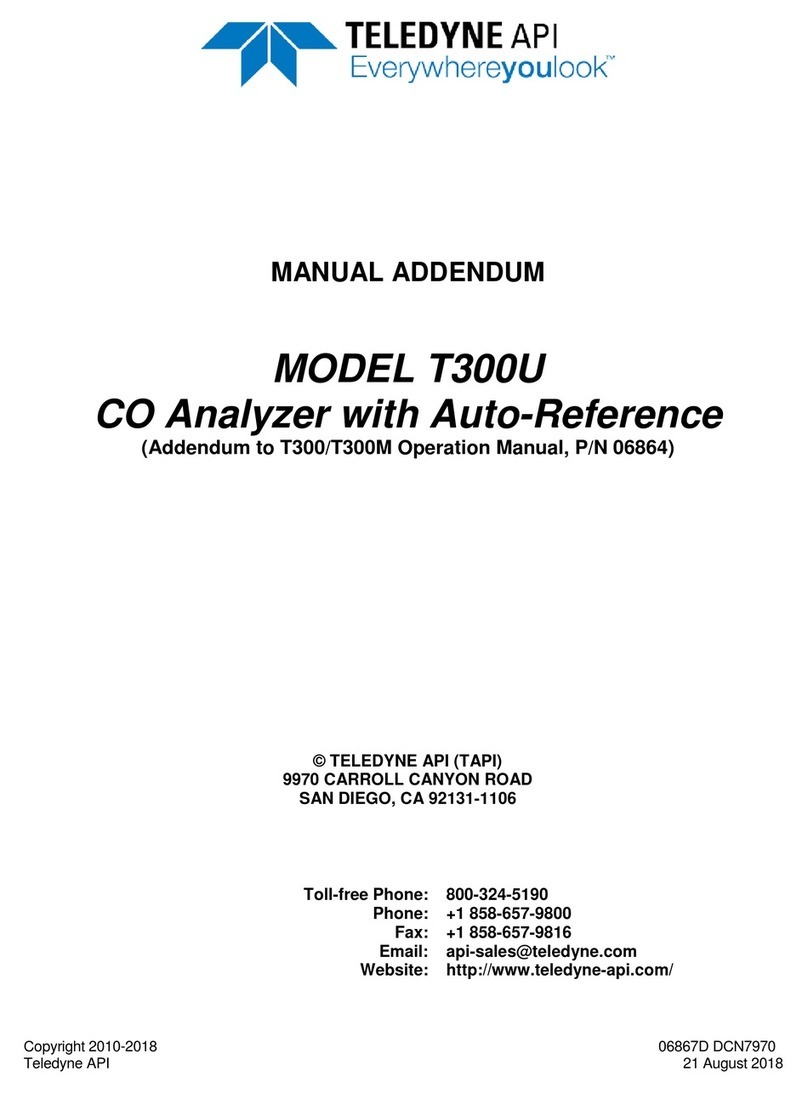
TELEDYNE API
TELEDYNE API T300 Installation and operating instructions
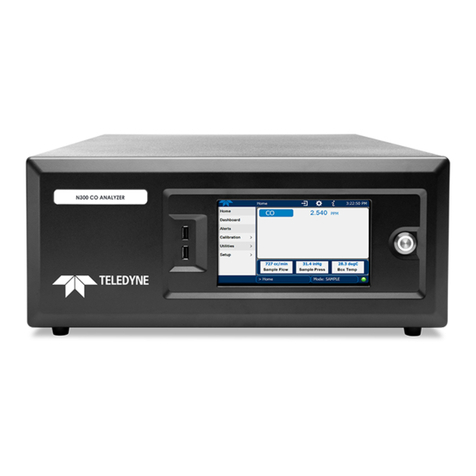
TELEDYNE API
TELEDYNE API N300 User manual
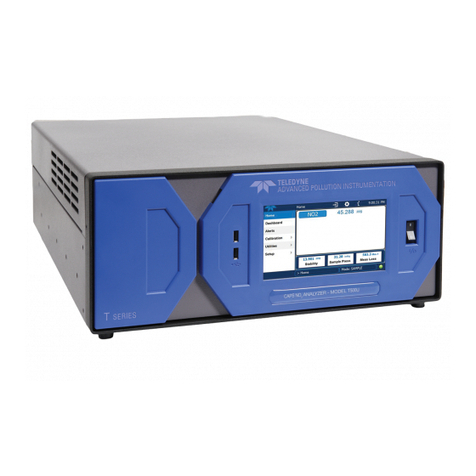
TELEDYNE API
TELEDYNE API T500U User manual
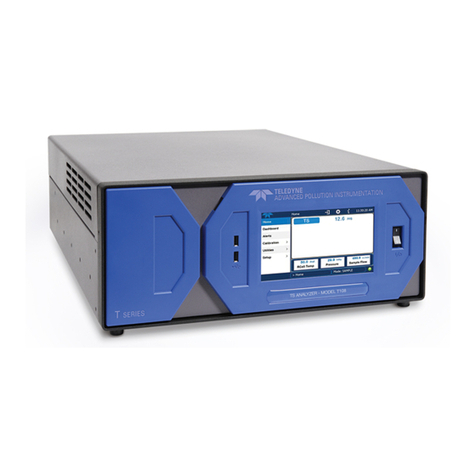
TELEDYNE API
TELEDYNE API T108 Series Quick start guide
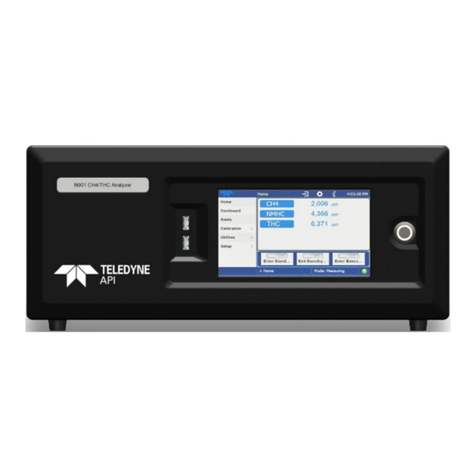
TELEDYNE API
TELEDYNE API N901 User manual

TELEDYNE API
TELEDYNE API T300 User manual
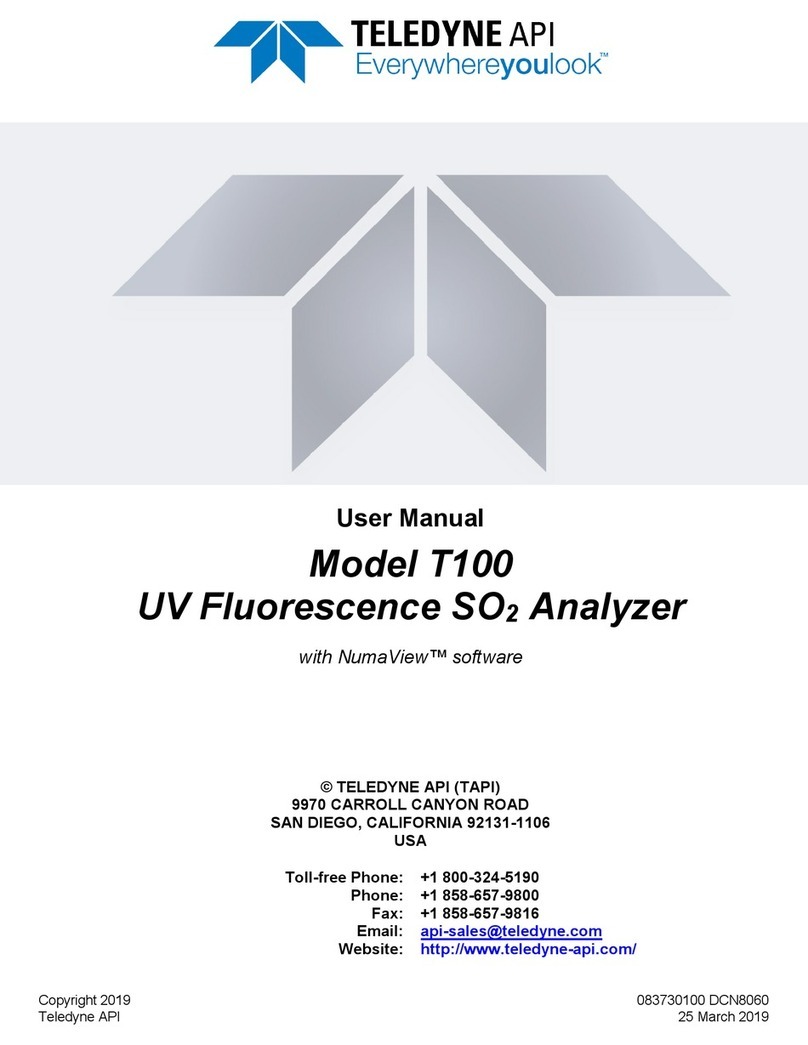
TELEDYNE API
TELEDYNE API T100 User manual
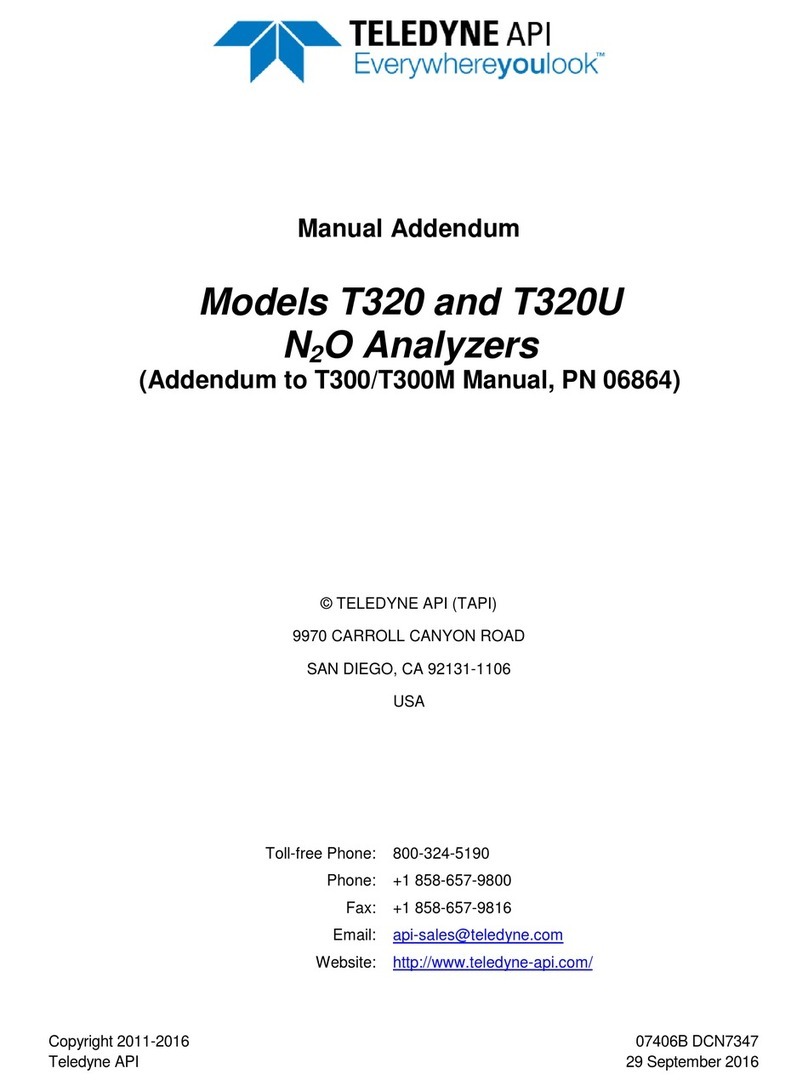
TELEDYNE API
TELEDYNE API T320U Installation and operating instructions

TELEDYNE API
TELEDYNE API T200U NOy User manual

TELEDYNE API
TELEDYNE API 465M User manual
